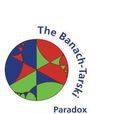媒體推薦
' … a readable and stimulating book.' Ward Henson, American Scientist
' … packed with fascinating and beautiful results.' R. J. Gardner, Bulletin of the London Mathematical Society
' … this beautiful book is written with care and is certainly worth reading.' Wlodzimierz Bzyl, Mathematical Reviews
作者介紹
Stan Wagon is a Professor of Mathematics at Macalester College, Minnesota. He is a winner of the Wolfram Research Innovator Award, as well as numerous writing awards including the Ford, Evans, and Allendoerfer Awards. His previous work includes A Course in Computational Number Theory (2000), The SIAM 100-Digit Challenge (2004), and Mathematica(r) in Action, 3rd edition (2010).
Stan Wagon is a Professor of Mathematics at Macalester College, Minnesota. He is a winner of the Wolfram Research Innovator Award, as well as numerous writing awards including the Ford, Evans, and Allendoerfer Awards. His previous work includes A Course in Computational Number Theory (2000), The SIAM 100-Digit Challenge (2004), and Mathematica(r) in Action, 3rd edition (2010).
目錄
Part I. Paradoxical Decompositions, or the Nonexistence of Finitely Additive Measures: 1. Introduction; 2. The Hausdorff Paradox; 3. The Banach–Tarski Paradox: duplication spheres and balls; 4. Locally commutative actions: minimizing the number of pieces in a paradoxical decomposition; 5. Higher dimensions and non-Euclidean spaces; 6. Free groups of large rank: getting a continuum of spheres from one; 7. Paradoxes in low dimensions; 8. The semi-group of equideomposability types; Part II. Finitely Additive Measures, or the Nonexistence of Paradoxical Decompositions: 9. Transition; 10. Measures in groups; 11. Applications of amenability: Marczewski measures and exotic measures; 12. Growth conditions in groups and supramenability; 13. The role of the axiom of choice.

